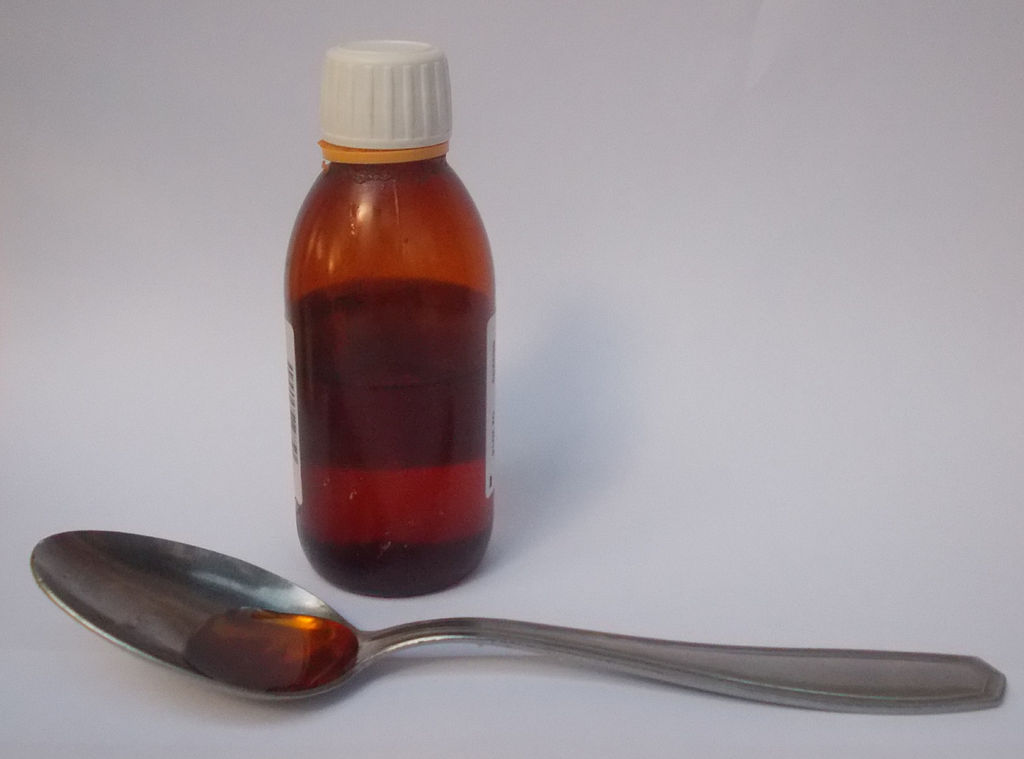
Article by Lalita Panicker, Consulting Editor, Views and Editor, Insight, Hindustan Times, New Delhi
Kenya’s drug regulator is recalling a batch of Johnson & Johnson children’s cough syrup, it said on Thursday, a day after Nigeria recalled the same batch of medication under the Benylin Paediatric brand. www.reuters.com/business/healthcare-pharmaceuticals/kenya-recalls-jj-childrens-cough-syrup-over-suspected-toxicity-2024-04-11/?
Nigeria’s health regulator said laboratory tests on the syrup showed a high level of diethylene glycol, which has been linked to the deaths of dozens of children in Gambia, Uzbekistan and Cameroon since 2022 in one of the world’s worst waves of poisoning from oral medication.
Kenya’s Pharmacy and Poisons Board (PPB) said in a statement it had commenced investigations and advised that sales of certain batches of the product be halted and returned to suppliers.
Kenvue which now owns the Benylin brand after a spin-off from J&J last year, did not immediately respond to a request for comment.
The batch being recalled was made by J&J in South Africa in May 2021 with an expiration date of April 2024, PPD said.
////
Alaskapox, a virus discovered in 2015 that has since sickened seven people, has been rechristened borealpox. The change came after the first fatal case, in an elderly man undergoing chemotherapy, made headlines in January, triggering worries the name might harm tourism. www.science.org/content/article/news-glance-jailed-conservationists-freed-physics-titan-dies-and-diversity-anatomical?
“It became clear that the name could be stigmatizing to Alaska,” says Joseph McLaughlin, Alaska’s state epidemiologist and one of the virus’ discoverers. Researchers at the US Centers for Disease Control and Prevention proposed the original name in a 2019 paper, despite World Health Organization warnings that giving diseases geographic names can cause confusion and stigmatization. The new name, a reference to the boreal ecosystem where the virus resides, beat out candidates including arcticpox and aurorapox.
////
Nearly a third of patients with advanced liver cancer who received a personalized vaccine developed by Geneos Therapeutics along with an immunotherapy drug in a small, early trial saw their tumours shrink, U.S. researchers reported on 07 April. www.reuters.com/business/healthcare-pharmaceuticals/geneos-cancer-vaccine-shrinks-liver-tumors-small-trial-2024-04-07/?
The result was roughly twice the response typically seen with the immunotherapy alone, the researchers said.
Findings from the preliminary study, presented at the American Association for Cancer Research in San Diego and published in Nature Medicine, suggests that vaccines based on mutations only present in a patient’s tumour may boost the immune system’s ability to recognize and attack hard-to-treat cancers.
The findings, which must be confirmed in a larger trial, moves the industry another step closer to effective cancer vaccines, after many past failures, and may expand the types of cancers that such therapies can treat.
Partners Moderna and Merck and Co and others have had promising results combining customized vaccines with immunotherapy to prevent skin cancer from returning in patients following surgery.
For the study, researchers used samples from patients’ tumours to build vaccines based on neoantigens – new mutations only present on an individual patient’s tumour. The goal was to train the immune system to attack and kill only these unique proteins, leaving healthy tissue unscathed.
Unlike skin cancer, which has many mutations for the body to recognize, liver cancer is considered a cold cancer because it contains fewer mutations, which has rendered immunotherapies less effective.
“This vaccine essentially educates the immune system to recognize antigens that it’s ignored,” said study leader Dr Mark Yarchoan of Johns Hopkins Kimmel Cancer Centre.
The study involved 36 patients with hepatocellular carcinoma, the most common form of liver cancer. Patients were given custom-made vaccines on top of Merck’s widely used immunotherapy Keytruda, the standard of care at the time.
Nearly a third of the patients treated with the combination therapy (30.1%) experienced tumour shrinkage, with three of those subjects having a complete response, meaning no detectable signs of the tumour remaining after a median follow-up of 21.5 months.
That compares with the typical response of about 12% to 18% in patients with liver cancer who receive immunotherapy alone.
“This certainly suggested that the vaccine actually added clinical efficacy,” Yarchoan said.
The most common adverse effect was mild injection site reactions. There were no serious adverse events.
Unlike many vaccine candidates based on messenger RNA (mRNA) technology, the Geneos treatment is a DNA vaccine in which the genetic code of the mutated proteins is injected into cells using a small electrical impulse. Each vaccine can target up to 40 mutated genes.
Yarchoan said larger trials are being planned, but declined to provide details.
////
For a study reported on last Thursday in The BMJ, researchers at U.S. Veterans Administration hospitals tracked a quarter of a million patients in Texas, New Mexico and Oklahoma before and after the VA implemented a program in those states limiting Proton pump inhibitors (PPI) use.
The program imposed limits on prescription size and refills for patients without documented reasons to be on the medication, discontinued old prescriptions, and provided education on alternatives.
The intervention led to a nearly 30% reduction in PPI prescriptions in those states compared to prescriptions issued to millions of VA patients in other states, researchers found.
The intervention did not reduce the rate of supposedly negative PPI effects.
“Our findings… suggest that PPIs may not be as harmful as some have feared,” study leader Dr Jacob Kurlander of the Lieutenant Colonel Charles S. Kettles VA Ann Arbor Medical Centre in Michigan said in a statement.
The PPI reduction program did not lead to an increase in healthcare visits with gastrointestinal diagnoses.
It did, however, reduce use of PPIs in a group of patients for whom continued use would have been appropriate, to counteract the effect of other drugs being taken that raise their risk of gastrointestinal bleeding.
////
Researchers are on track to help CAR-T cells – a revolutionary type of cancer immunotherapy – remain effective for longer periods in patients’ bodies, according to two separate reports published last Wednesday in Nature.
Manufacturing of CAR-T cells involves removing a patient’s own T cells, a key component of the immune system, genetically altering them, and re-infusing them. The reprogrammed T cells can recognize and kill cancer cells. “But they tend to get exhausted if the fight goes on for a long time,” a commentary published with the studies explains.
The longer the CAR-T cells survive in the patient’s body, the more effectively they respond to cancer, but fewer than 50% of patients who receive CAR-T cell therapy remain cured after a year, Evan Weber of University of Pennsylvania Perelman School of Medicine in Philadelphia and colleagues noted in one of the reports.
In laboratory experiments, they found that a protein called FOXO1 improves the function and survival of CAR T cells.
In the absence of FOXO1, human CAR-T cells lose their ability to recognize and attack cancer cells in animals, they found. Engineering the CAR-T cells to have higher FOXO1 levels turned on memory genes and enhanced the cells’ ability to persist and fight cancer in animal models.
The researchers also saw evidence that FOXO1 activity in patient samples correlates with long-term disease control.
A separate team from Australia reported similar findings.
“These findings may help improve the design of CAR-T cell therapies and potentially benefit a wider range of patients,” Weber said in a statement.
////
It might be possible to treat an aggressive childhood cancer by stabilizing damaged tumour-suppressing proteins. Rhabdoid tumours are generally driven by mutations in the SMARCB1 protein, which forms part of a larger complex called SWI/SNF (known as Switch-Sniff). SWI/SNF cracks down on any cancer-like changes in the cell, but is dismantled by a quality-control protein called DCAF5 when SMARCB1 isn’t present. When the researchers depleted DCAF5, the complex sprang back into action and cancers vanished in mice. “I was really stunned,” says molecular oncologist and co-author Charles Roberts. It’s a “paradigm-shifting idea,” says molecular biologist Emily Dykhuizen.
STAT | 7 min read
Reference: Nature paper (27 March)
////
The number of prostate-cancer cases worldwide is likely to double by 2040 as people live longer and populations age. Deaths from the disease are projected to increase by 85% over that period, according to The Lancet Commission on prostate cancer. “We know this surge in cases is coming, so we need to start planning and take action now,” says cancer researcher and co-author Nick James. The Commission found that combining a prostate-specific antigen test with an MRI could make prostate-cancer screening more accurate and avoid unnecessary treatments that can cause incontinence and erectile dysfunction.
The Guardian | 5 min read
Reference: The Lancet report (4 April)
////
An accumulation of lactate could be driving a deadly muscle-wasting disease called cachexia that affects up to 80% of people with cancer. Lactate was elevated in mice that developed cachexia after being injected with cancer cells. In 26 people with lung cancer, those with cachexia also had higher lactate levels. Mice infused with lactate lost a significant amount of muscle and fat over a fortnight, and cachexia was reduced or reversed in mice that were genetically engineered to lack a lactate receptor called GPR81. But not everyone is convinced: cachexia researcher Marilia Seelaender says it’s unusual for people with cancer to have high lactate levels.
Science | 5 min read
Reference: Nature Metabolism paper (18 March)


